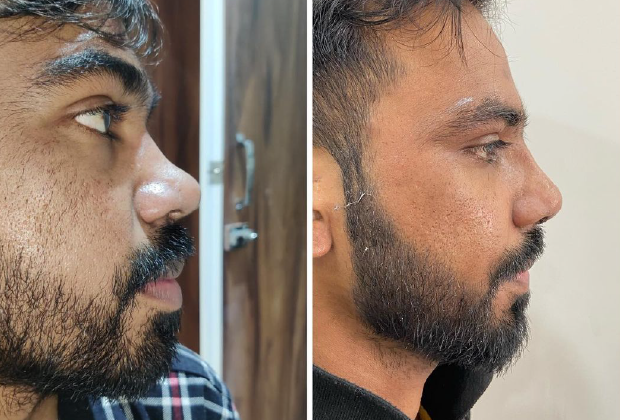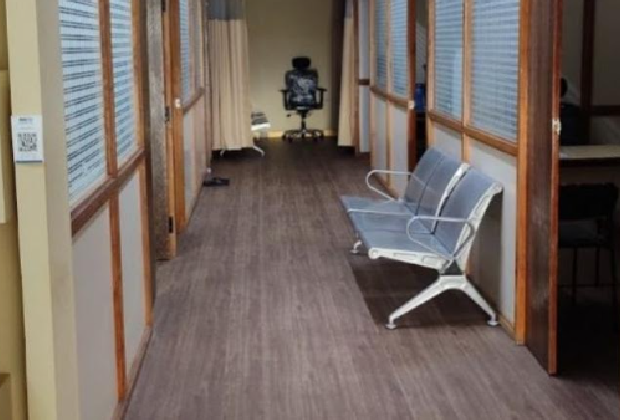Famous celebrities who have undergone Rhinoplasty surgery
Rhinoplasty is a popular option for nose correction treatment. There are so many famous celebrities who have undergone nose jobs. Rhinoplasty surgery has gotten them desired modification to reshape the structure of their noses. Few of them are-
- Shruti Hasaan: She is the daughter of famous south Indian actor Kamal Hasaan, she revealed in one of her interviews that she felt no pressure for undergoing a nose job and felt absolutely good about it.
- Shilpa Shetty: She is a famous Bollywood actress. She has given a statement in an interview while opening up about nose correction. She has stated that she felt in need to undergo the knife to change the look of the face more aesthetically.
- Priyanka Chopra: Priyanka Chopra is a renowned name in Bollywood and Hollywood as well. She has also won a miss world title of 2000. She wrote a book named ‘Unfinished’ and stated how she has undergone polyp surgery.
Important things to keep in mind for rhinoplasty treatment?
Rhinoplasty is a technical cosmetic surgery depending on various factors. Following are some important factors to prepare yourself for rhinoplasty treatment-
- Make easy and adjusting changes in your diet plans to feel better post surgery. The changes made will help you in the recovery period after rhinoplasty.
- Change your laundry daily to avoid any infection
- Clean all the makeup before going to surgery
- Don’t eat or drink a night before going to the operation theatre
Are there any risks involved in rhinoplasty surgery?
There are no major complications of this surgery. But patients can feel slight discomfort in breathing post rhinoplasty surgery because of the splint or cast that is put on the new nose to secure the structure.
You can notice minor issues like other treatment such as-
- Swelling and bruising happened because of surgery which will go by the time
- Redness around the nose
- If not taken care properly bacterial infection can be borne
- Nasal bleeding
- Irritation and itchiness around the nose
What is non-surgical rhinoplasty?
Non-surgical rhinoplasty is the procedure in which injectable fillers are used to alter the shape of the nose. It is also known as a liquid nose job and is done with the help of derma fillers. Mostly hyaluronic acid, like Juvederm, calcium hydroxyapatite, or Restylane is used for this procedure. It is very effective in filling the depressed areas of the nose, lifting the tip, or smoothing out the bumps and bridges on the nose.
Non-surgical rhinoplasty is more like an augmentation procedure, hence, it cannot help to reduce the size of the nose. Like any surgical procedure, this non-surgical treatment has some risks and complications. So, if you want to change the nose shape through this technique, make sure that you have a detailed consultation and understand the risks and benefits of the procedure.
Difference between Open & Closed Rhinoplasty
Open and closed rhinoplasty are two different techniques that can be used to change the shape and structure of the nose. The key differences between these two techniques are explained below:
- Open rhinoplasty is done through an incision around the columella whereas, in closed technique, the incisions are made inside the nose.
- Open rhinoplasty allows the surgeon to measure the true anatomy of the nose and perform detailed and precise work. However, closed rhinoplasty limits the access of the surgeon to the internal structures.
- The open technique for nose jobs is effective but it may leave a scar whereas closed surgery doesn’t cause scarring on the face.
- Closed rhinoplasty takes less time to perform whereas open rhinoplasty requires longer for surgery as well as recovery.
- Open rhinoplasty is preferred when the patient is getting a revision nose job or needs major changes. However, closed surgery is done when the patient requires nasal bridge modifications or minor changes.
Recovery Timeline of Rhinoplasty
The rhinoplasty surgeon will explain the recovery timeline of the nose job. Typically, the final results of rhinoplasty will take around one year to become clearly visible. It may sound like a very long time but it is a critical period that will determine whether rhinoplasty surgery was worth it.
- Week 1- The doctor will remove the splint from the nose and you can go out in public. There will still be visible bruising around the eyes.
- Week 2- The swelling and bruising around the eyes will subside and it will be safe to resume daily activities.
- Week 3-4- You can perform activities like jogging, swimming, cycling, and other cardiovascular exercises.
- Week 6- The bone and cartilage will take a stable shape and you can start working out, wearing glasses, and even blowing your nose.
- Week 3-6- The numbness in the nose will resolve completely and your sense of smell will also improve.
- 1 Year- The healing process will be complete and the nose’s shape will be refined.
You can speed up the healing process by listening to the doctor’s advice and taking proper care of your nose.
Recovery Tips After Rhinoplasty Surgery
Many people don’t realize this but the recovery period is the most crucial phase to get the desired results from rhinoplasty surgery. You will be able to achieve the best results by following the recovery tips below:
- Keep the swelling in control by using an ice pack or cooling pads. This will help to alleviate the pressure and reduce puffiness in the treated area. It will also promote faster healing by constricting the blood flow to the nose.
- Avoid taking anti-inflammatory medicines unless prescribed by your doctor. These medicines can increase the swelling and blood flow that will slow down the healing process.
- Do not take painkillers or any other medicines without consulting with the doctor. Talk to the doctor to get a specific dosage for the pain medications to ensure that the medicine doesn’t cause any adverse reactions or hinder the healing process.
- Take sufficient time off your work or school to focus on healing. Give your body proper rest to recover quickly. Minimize physical activities to prevent stress and injury to the nose.
- Take a bath rather than having a shower. You will have bandages, splints, and supports in and around the nose. They should not get wet until removed by the doctor. Hence, for at least the first week, you’ll have to wash your face with a damp cloth around the bandages.
- Eat healthy foods and drink plenty of water during the recovery. This will ensure that you are getting plenty of nutrients that promote faster healing. Drinking plenty of water will help to flush out toxins from the body, reducing the chances of infection.
- Avoid blowing your nose unless it has healed properly and the support devices are removed. If you blow the nose while the splint is inside, it may dislodge or shift them. This can injure the nose and compromise the healing process.
- Make sure that you stay away from peppery and spicy foods that can cause irritation in your nose, especially in the early stages of healing. Reduce your salt intake as much as possible. Excessive salt intake will increase the swelling and pressure around the surgical site. Therefore, it is best to avoid salty foods or add salt to food items.
- Try to keep your head elevated most of the time, especially during sleeping or resting. Place a pillow under your head to keep the fluid from building up around the face.
Take post-surgery follow-up appointments with the doctor to ensure that your nose is healing properly after rhinoplasty. The doctor will monitor whether the results are closer to what you desire or not. The doctor will also check if the splints or bandages need replacement.











Pristyncare%20Clinic.webp)
Pristyncare%20Clinic.webp)









 4.8/5
4.8/5
 NABH
NABH.svg)









